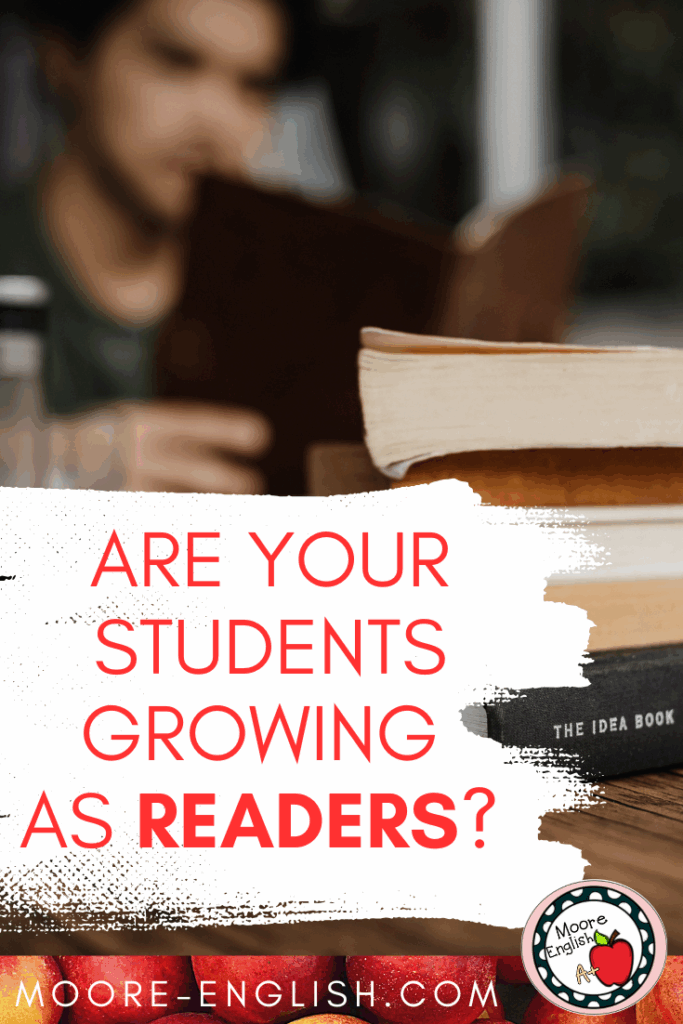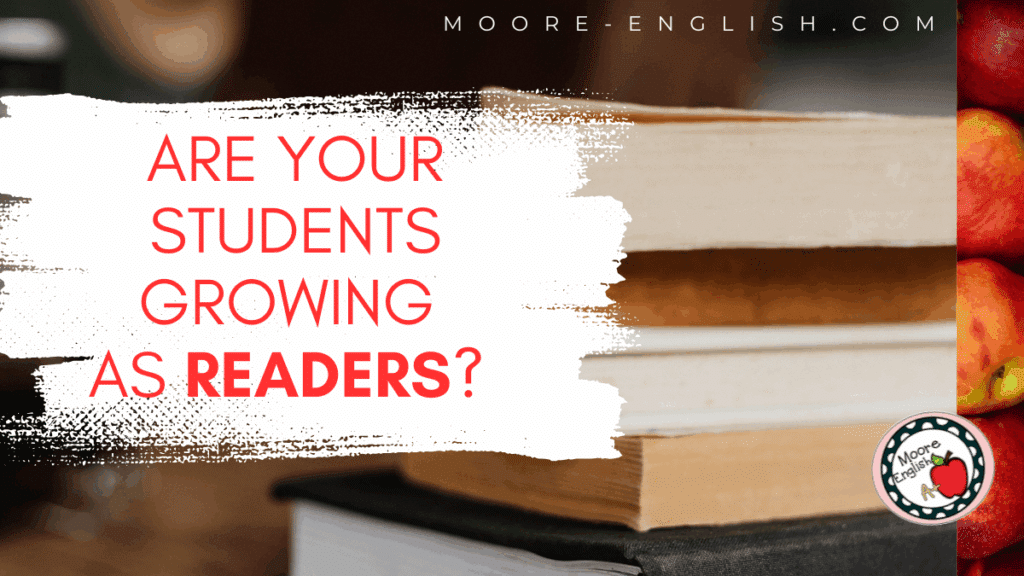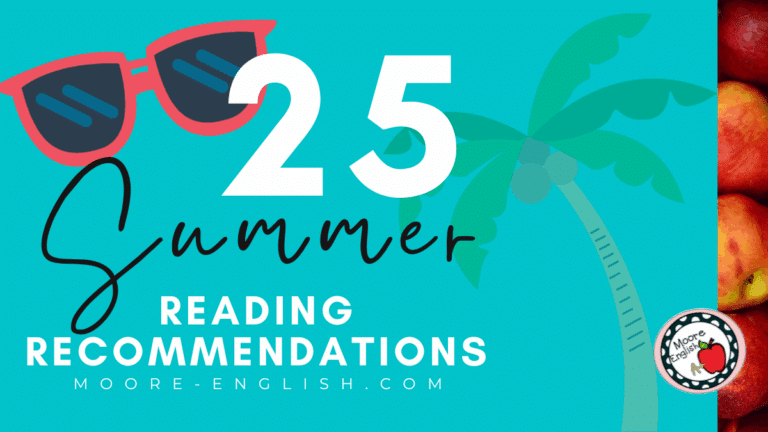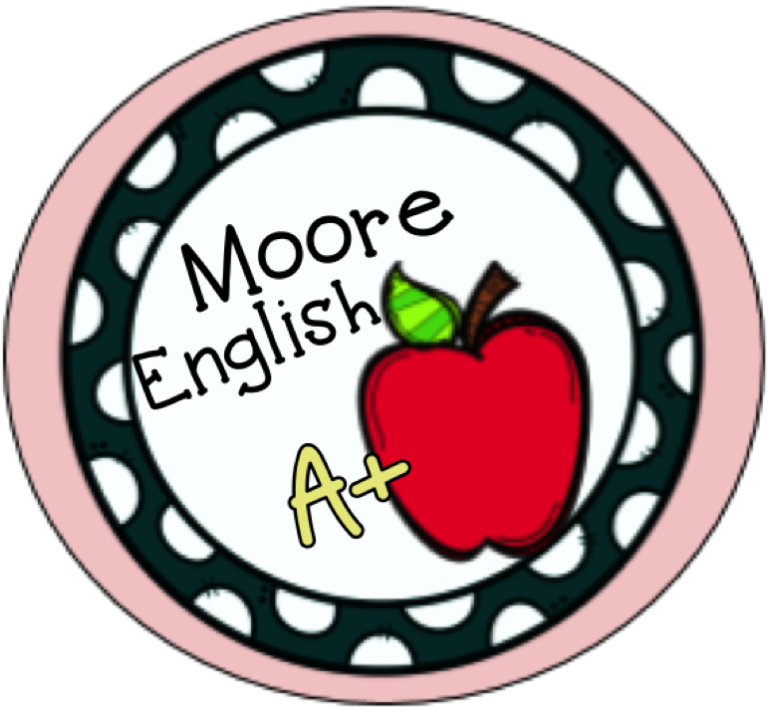Over the course of a school year, it can sometimes be tricky to tell if your students are maturing as readers. In your gut, you suspect students have grown.
But test data doesn’t always bear our your suspicions, and behavior issues can sometimes mask student growth. It can be hard to tell if a student is maturing as a reader when they are not mature enough to regulate their behavior. Similarly, neurodivergent behavior may also make it difficult to tell if a student is growing as a reader.
With all this in mind, I wanted to share 9 easy ways to tell if your students are maturing as readers.
This post this post may contain affiliate links. Please read the Terms of Use.
Early Signs Students Are Maturing as Readers
First, annotation is such an important part of being an active reader. At the start of the year, I always teach my students 4 specific steps for annotating poetry and 4 specific steps for annotating nonfiction. As the year progresses, I can tell my students are maturing as readers because they begin to make annotation their own. Students develop a personal shorthand, abbreviations, and symbols. Mature readers have their own idiosyncratic annotation moves.
In addition, students who are maturing as readers make more text connections, and they make those connections without prompting. In particular, students start to identify patterns across texts, looking for repeated archetypes, symbols, or allusions.
Students who are maturing as readers also begin to question narrative truth. Younger readers often accept that the narrator is honest or unbiased, but maturing readers begin to wonder. For example, an immature reader believes Scout’s early descriptions of Boo Radley, but a maturing reader wonders if the words of a first-grader are accurate. Scout also believes a number of superstitions, which mature readers recognize.
Maturing Readers Synthesize
In addition to making text connections, students who are maturing as readers begin to synthesize throughout a text.
For example, a young or inexperienced reader may be able to identify one theme in a text, but a maturing reader will be able to identify several themes. Similarly, maturing readers identify more complex themes. To stick with the example from earlier, a basic theme from To Kill a Mockingbird might be “prejudice is dangerous,” but a more complex theme might be “prejudice is the result of intersecting inequalities.”
Furthemore, students who are maturing as readers will begin to identify motifs. Based on the title alone, mature readers will be looking for animals, especially birds, in To Kill a Mockingbird. Maturing readers will also understand that water usually connects to rebirth, changing seasons usually relate to growth, and sickness is rarely ever just about feeling unwell. One great resource for helping students identify motifs is How to Read Literature like a Professor by Thomas C. Forester. Here are some texts to practice with motifs:
- Macbeth by William Shakespeare: blood, birds, sleeping / dreaming, and sickness all appear in this play
- The Great Gatsby by F. Scott Fitzgerald: colors, cars / driving, and money are all repeated in the novel
- Literary movements often feature cohesive elements that can help students synthesize across texts
It’s All in the Details
Unsurprisingly, maturing readers will also begin to pick up on the details. Especially when reading poetry, students who are maturing as readers pick up on details related to punctuation, meter, and rhyme. In part, quickly identifying key changes or alterations is part of being an analytical thinker. It’s also part of understanding poetry, and it explains why analyzing poetry is challenging. Here are some texts with key details:
- “Courage” by Anne Sexton is unrhymed, but the poem’s structure and its punctuation are details that help readers interpret the text.
- “Invictus” by William Ernest Henley and “Long Distance II” by Tony Harrison have some punctuation and rhyme changes that clearly signal the turn.
- Shakespeare’s sonnets are such tightly-wound constructs that they provide ample opportunity for analyzing shifts.
- “When I Heard the Learn’d Astronomer” by Walt Whitman makes a series of choices that signal the turn for the reader.
Similarly, a detail-oriented reader will also be able to keep track of different symbols, quotes, and shifts. Then, they will be able to use these details to answer open-ended questions in specific detail. As an ELA teacher, I am constantly pushing against responses like “How am I supposed to know what the writer was thinking?” or “This choice makes the reader think.” Neither of those responses is unique or insightful, and helping students push beyond these kinds of answers is key to helping them mature as readers. When students struggle with this kind of thinking, I often turn to symbol logs. Some texts that lend themselves to symbol logs include:
- The Crucible by Arthur Miller
- “A Worn Path” by Eudora Welty
- Romeo and Juliet by William Shakespeare
Taking it to the Next Level
Finally, the best sign that a student is maturing as a reader is lack of defensiveness when their interpretation of a text is challenged. Inexperienced readers are often tied to a specific interpretation, but mature readers welcome alternative perspectives. For example, a young reader might argue that Odysseus is a hero, but a more mature reader may also be able to argue that he is selfish.
To encourage students to “try on” different perspectives, you might consider introducing literary criticism. I love teaching literary criticism, so I’ve put together a lot of resources for lit crit. Check them out:
- 5 Reasons to Include Literary Criticism, and 5 Ways to Make it Happen
- How to Introduce Deconstructionist Literary Criticism
- Teaching at the Intersection of History and Literature
- 40 Texts for Teaching Literary Criticism
- Historical and Biographical Criticism
- Deconstructionist Criticism Bundle
- All Literary Criticism Resources
- Introducing Literary Criticism
- Feminist Criticism Bundle
- Historical Criticism









